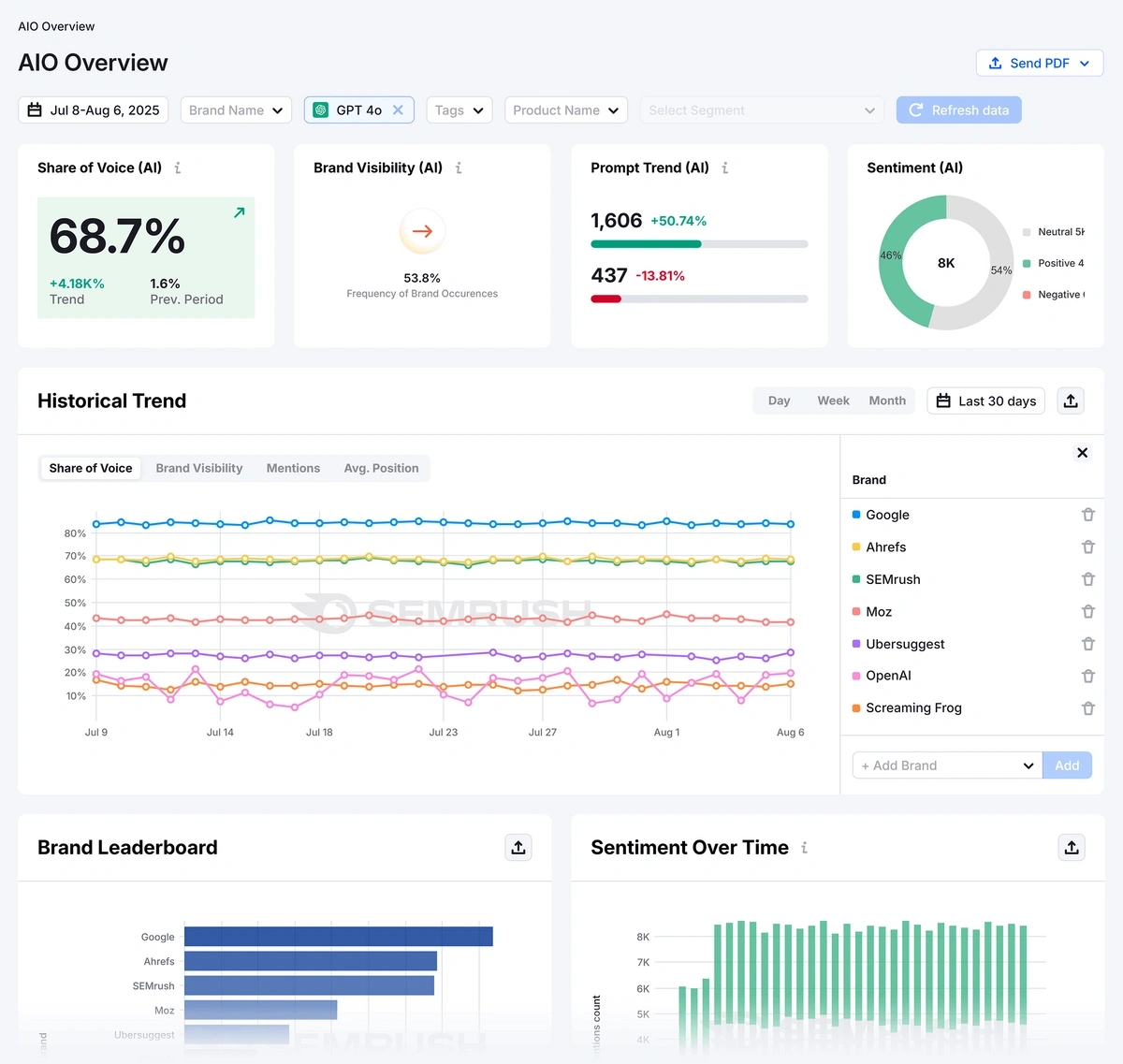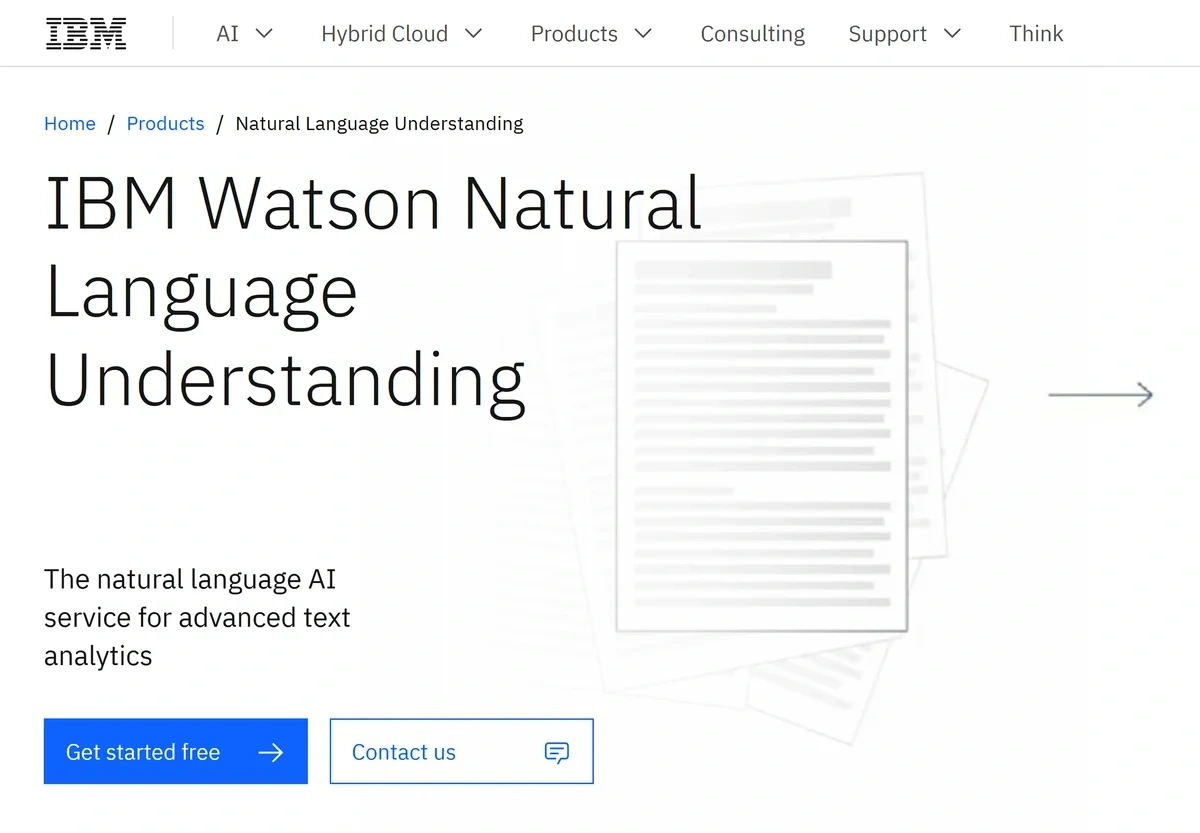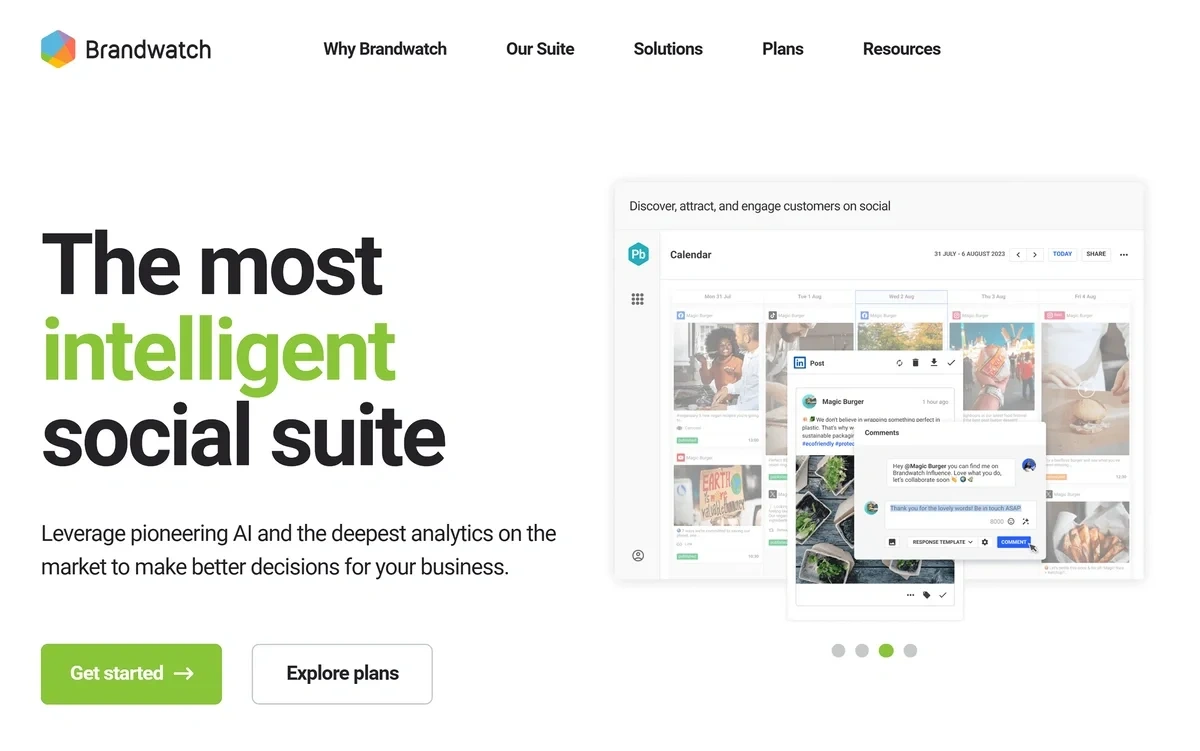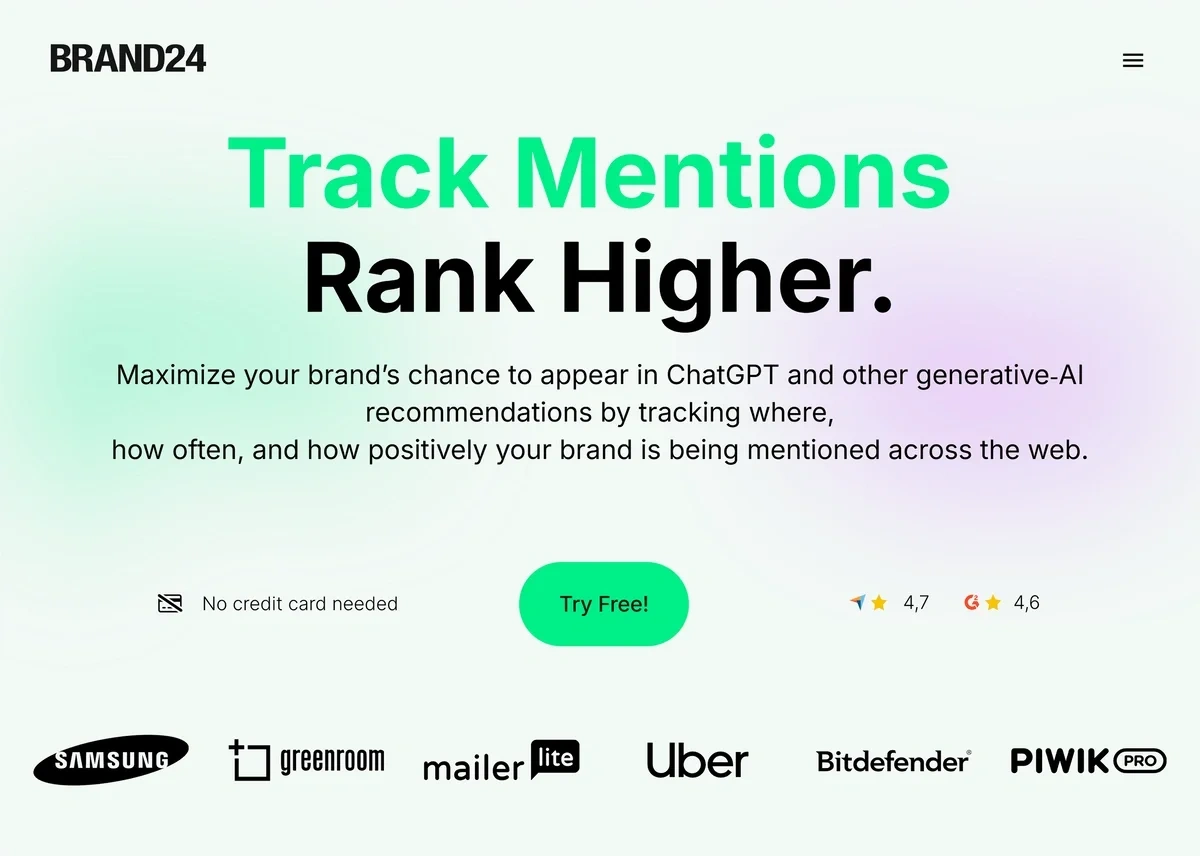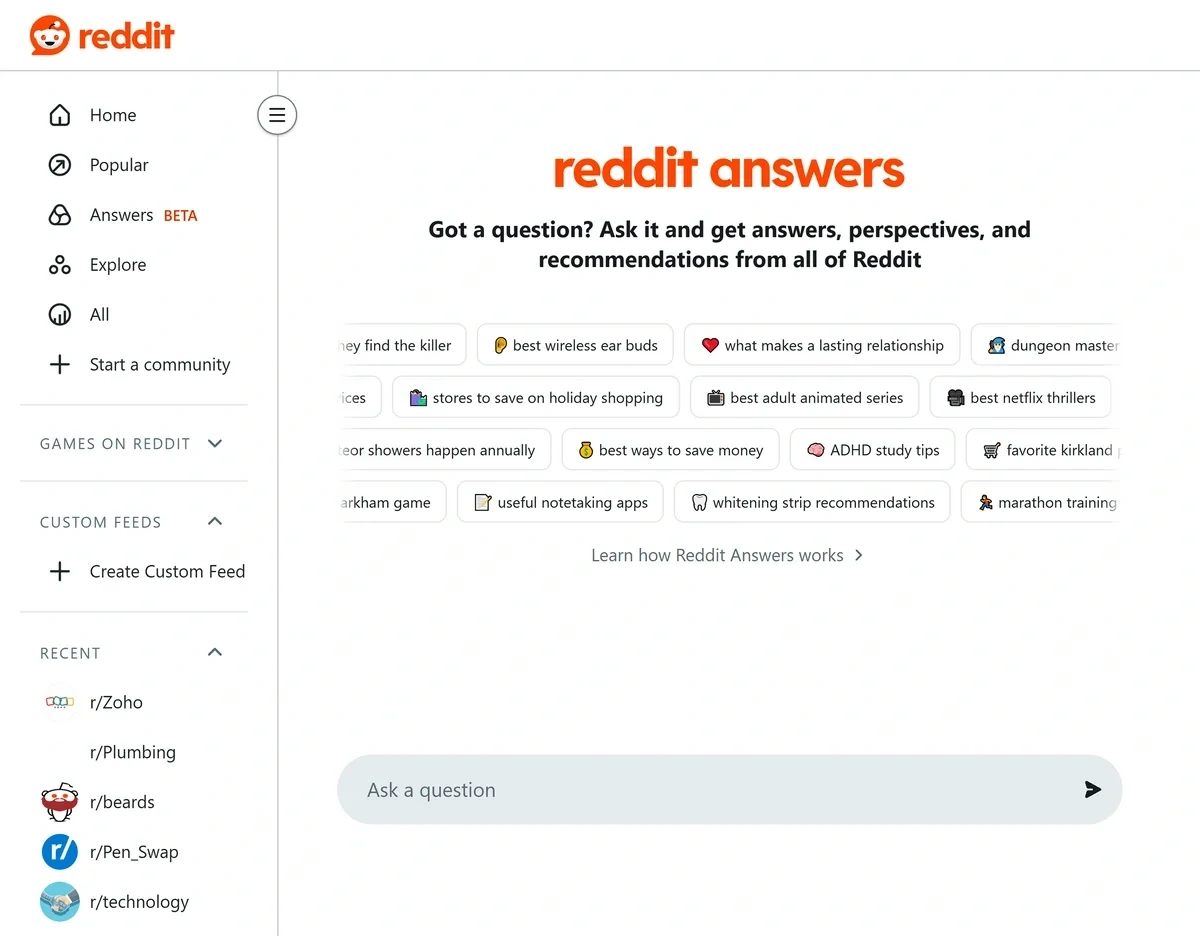
How to Measure Your Brand Sentiment in LLMs
Measuring online brand sentiment used to be fairly straightforward: you looked at mentions on social media and review sites, and that was that.
But with large language models (LLMs) like ChatGPT and Gemini in the picture, everything has changed. Sure, social media and review sites still play a big role in your brand’s sentiment, but now there’s this HUGE other element to take into account.
What are LLMs saying about your brand? Are they presenting you in a positive, neutral, or negative light?
In this article, I’ll show you how to find out what the major LLMs are saying about your brand.
TL;DR
- AI brand sentiment measures the tone (positive, negative, or neutral) LLMs use when describing your brand in their responses
- Track across platforms by monitoring your sentiment across major AI platforms like ChatGPT, Claude, Perplexity, Google AI Overviews, Gemini, Google AI Mode, and Microsoft Copilot
- Use specialized tools like Semrush Enterprise AIO to monitor brand mentions and sentiment across AI platforms
- Improve your brand’s sentiment systematically through entity optimization, structured data, and AI-friendly content creation
- Monitor continuously because AI training data and responses evolve rapidly
What AI Brand Sentiment Means
AI brand sentiment is the analysis of how a large language model perceives and represents a brand based on positive, negative, or neutral contexts in its training data (a.k.a the content it finds online to train itself on).
The sentiment AI finds about you online is the tone it’ll use to reflect your brand when it mentions you in its answers. If it finds good reviews and positive comments on Reddit, for example, it might mention you in a positive light.
Traditional sentiment analysis tracks explicit mentions and opinions, whereas AI brand sentiment measures the tone, context, and positioning that LLMs give your brand in their responses. It digs into how AI systems merge all of that information and present it to users who ask questions that are relevant to your business.
Different LLMs can present your brand differently, even for the same prompts. You'll want to monitor brand sentiment across the major AI platforms, such as:
- Google AI Overviews
- ChatGPT
- Claude
- Perplexity
- Microsoft Copilot
- Gemini
Why This Matters for Search, Reputation, and Conversions
AI-generated responses influence three critical areas of your business:
Search visibility: AI tools like Google AI Overviews, Perplexity, and ChatGPT search are increasingly influencing how people discover brands. Your brand's sentiment in these systems helps determine when and how you appear in AI-generated answers.
Brand reputation: AI systems synthesize information from across the web to form opinions about your brand. These AI-formed perceptions then get shared with millions of users, basically creating a new layer of reputation management that exists separate from traditional social media and review platforms.
Purchase decisions: When potential customers ask AI systems for product recommendations or industry insights, the sentiment and positioning of your brand in those responses directly impacts your pipeline. A negative or absent presence can cost you qualified leads, while positive positioning can drive big growth.
Why Measuring Your Brand's Sentiment Is Important
AI’s perception of your brand can have a huge impact on your business. Here’s why:
- Customers are starting to trust AI recommendations more than traditional advertising. According to research by Attest, among consumers already using AI, just under 41% of consumers agree that they trust Gen AI search results more than paid search results. Plus, among consumers who already use AI, 60% thought their usage would increase over the next 6 months. So, you want LLMs to present your brand favorably starting now.
- AI responses shape industry perceptions beyond individual purchases. According to Siege Media + Wynter, 57.4% of content marketers use AI tools for writing content. You wouldn’t want content created using AI-generated insights that position your brand poorly.
- You gain valuable insights about industry trends and positioning. Monitoring how AI systems discuss your industry helps you keep up with industry narratives, competitive dynamics, and market trends. You'll be able to keep an eye on which factors AI models prioritize when evaluating companies in your space, what industry challenges they emphasize, and how market leaders are being positioned.
- You learn more about your ideal customer profile and audience preferences. Watching AI sentiment for your brand helps you see what aspects of your business resonate most strongly with different audience segments. For example, you might see that AI systems consistently highlight your customer service when discussing enterprise solutions, or emphasize your pricing when recommending products to small businesses.
- You can improve your market strategy based on AI-driven insights. Understanding how LLMs position your brand compared to competitors can help you refine your messaging, identify competitor gaps, and optimize your content strategy. If AI systems consistently overlook your key differentiators or misrepresent your capabilities, you can adjust your content to better influence future AI training and responses.
Use trending keywords to create content your audience craves.Get More Search Traffic
How to Measure Your Brand Sentiment
Measuring brand sentiment in AI systems is a little bit trickier and more technical than traditional sentiment analysis. Here are a few methods to know about:
Brand Sentiment Analysis Models
Modern sentiment analysis relies on three primary approaches:
Document-based analysis evaluates sentiment across entire pieces of content (a.k.a. documents). When a document-based system generates a response about your brand, it’s looking at whole documents at a time and averaging their tones to determine your overall sentiment. This approach works well for getting broad sentiment trends but can miss nuanced opinions within longer responses.
Sentence-based analysis examines sentiment at the individual sentence level. This method catches mixed sentiment within a single piece of content - for instance, when a review praises your product features but criticizes your pricing in the same paragraph. Because of this, it can be more accurate than document-based analysis.
Aspect-based analysis goes deeper by identifying sentiment toward specific brand attributes like customer service, pricing, product quality, or user experience. This approach helps you see which elements of your business are viewed favorably or unfavorably, helping you pinpoint what drives positive or negative brand sentiment.
Natural Language Processing
Natural language processing (NLP) powers sentiment analysis by helping systems understand context, sarcasm, and implied meaning. Advanced NLP models can distinguish between factual statements and opinion-based content, identify when AI systems are making recommendations versus simply providing information, and detect subtle bias in how your brand is presented compared to competitors.
Manual vs. Automatic Brand Sentiment Analysis
Automatic analysis scales well but requires human oversight for accuracy. Automated tools can process thousands of AI responses daily, tracking sentiment trends and flagging significant changes. However, manual analysis is still essential for understanding context, evaluating the quality of AI recommendations, and catching nuanced positioning that automated systems might miss.
Sentiment Analysis Algorithms and Text Analysis Approaches
Modern algorithms use machine learning to continuously improve accuracy by learning from new data patterns. These systems analyze linguistic patterns, contextual clues, and comparative language to determine how AI models position your brand. The best approaches combine multiple algorithmic techniques to cross-validate results and reduce false positives.
Tools to Use to Analyze Brand Sentiment
The right combination of tools can streamline your brand sentiment monitoring across AI platforms while providing actionable insights for improvement.
1. Semrush Enterprise AIO
Semrush Enterprise AIO offers brand monitoring features that are specifically designed for tracking mentions across AI-powered platforms. The platform monitors brand sentiment across ChatGPT, Claude, Gemini, Perplexity, and more platforms to come, providing real-time alerts when your brand appears in AI responses.
Key features include sentiment scoring across different AI platforms, competitive sentiment benchmarking to see how your brand compares to competitors in AI responses, and automated reporting that tracks sentiment trends over time. Semrush also identifies which sources AI platforms cite when discussing your brand, helping you understand what content influences AI training.
2. IBM Watson Natural Language Understanding
IBM Watson leverages deep learning algorithms to extract meaningful insights from unstructured text. The platform can identify specific entities, classify content into hierarchical categories, and detect emotional undertones including joy, anger, fear, and other feelings expressed in AI responses about your business.
Beyond basic sentiment scoring, Watson NLU can parse sentence structures to understand relationships between your brand and specific actions or attributes mentioned in AI responses. It can also help uncover high-level themes that may not be explicitly stated but influence how AI systems present your brand to users. This granular analysis helps enterprise teams understand not just whether AI sentiment is positive or negative, but which specific business aspects drive those perceptions.
Get a complete view of your competitors to anticipate trends and lead your marketBuild a winning strategy
3. Lexalytics
Lexalytics provides comprehensive text analytics through its Salience engine, which can process unstructured content including AI-generated responses about your brand. The platform offers native language support across 29 languages and incorporates industry-specific configurations that improve accuracy for different business sectors.
Beyond standard sentiment analysis, Lexalytics also has intent detection capabilities that help determine the expressed intent behind mentions of your brand. Plus, its entity extraction feature identifies mentions of people, places, companies, and products within AI-generated content, while its categorization features organize large volumes of text into customizable groups for easier analysis.
4. Brandwatch
Brandwatch combines proprietary AI technologies with generative AI integrations to deliver comprehensive brand monitoring across traditional and emerging digital channels. The platform's Iris AI assistant helps users navigate vast amounts of data while pinpointing actionable insights that matter most for brand reputation management.
What sets Brandwatch apart is its layered approach that combines human-led curation, proprietary AI analysis, and generative AI insights to provide context behind data patterns. This multi-tiered system helps enterprise teams understand not just what's being said about their brand, but why sentiment shifts occur and what strategic actions to take based on emerging trends and risks.
5. Brand24
Brand24 focuses specifically on AI visibility, helping brands maximize their chances of appearing in ChatGPT and other generative AI recommendations. The platform monitors brand mentions across 25 million sources including news sites, blogs, forums, Reddit, and LinkedIn–the high-authority platforms that carry significant weight with AI training models.
Brand24 measures both the reach and authority of each mention, helping you identify which coverage truly influences AI responses about your brand. The platform's AI visibility features help you correlate mention volume, sentiment, and reach with actual appearances in AI-generated responses over time. Brand24 also provides anomaly detection to spot unusual spikes in mentions or reach, allowing you to quickly address potential issues or capitalize on emerging trends.
6. Reddit Answers (for Quick Testing)
For immediate sentiment checking, Reddit Answers provides an accessible way to test brand sentiment.
Simply prompt the system with questions like "What is the sentiment around [your brand]?" or "How do people feel about [your brand] compared to [competitor]?" This gives you instant insight into how AI systems currently perceive and present your brand.
How to Improve Your Brand Sentiment
Improving how AI platforms perceive and present your brand means influencing the data sources these models rely on. Here are five proven strategies you can use to improve your brand sentiment across LLM platforms.
1. Nail Your Entity Hygiene
Clean, consistent entity data forms the foundation of your brand’s sentiment in LLMs. Ensure your brand name, key executives, products, and company information appear uniformly across all digital touchpoints.
Update your knowledge panels on Google, maintain current Wikipedia entries, and ensure press releases use consistent terminology.
Structure your brand information using schema markup that AI systems can easily parse. Create clear, factual content about your company's founding date, headquarters location, key products, and major achievements. Present this information in structured formats that LLMs can extract without interpretation bias.
Focus on objective, verifiable facts rather than marketing language. AI systems trust neutral, encyclopedia-style information more than promotional content when building their understanding of your brand.
2. Feed Sources Models Train On
Identify the high-authority sources that AI models frequently cite and ensure your brand appears positively in those locations. This includes maintaining strong profiles on platforms like LinkedIn, contributing to industry publications, and securing coverage in reputable news sources.
Monitor which sources AI systems reference when discussing your brand or industry. If competitors appear more frequently in these authoritative sources, develop a content strategy to increase your presence in the same publications and platforms.
3. Write Content That LLMs Like to Quote
Create content specifically designed to be cited by AI. This means writing clear, factual, well-sourced articles about industry topics where your expertise naturally positions your brand favorably. Use direct language, cite credible sources, and structure content with clear headings that AI systems can easily extract.
Develop comprehensive resource pages, industry guides, and research reports that AI systems can use to answer questions in your industry. When LLMs need authoritative information about your industry, you want your content to be their first choice.
However, make sure you’re still creating the content for humans, too! It should be something humans will want to read.
4. Control Your Contact and “About” Information
AI systems often surface contact details when users ask how to reach companies (especially those with customer service), so maintaining accurate, professional contact information is a necessity.
Optimize your company's "About" pages, executive bios, and media kits to present your brand in the best light. AI systems frequently pull this information when introducing your company in responses.
5. Work the Feedback Loops
Monitor AI mentions about your brand and identify patterns in how they present your company. When you discover negative or inaccurate information, trace it back to the source and address the underlying content. AI training improves over time, so correcting source material eventually improves AI answers.
Engage with AI platforms' feedback mechanisms when available. Some systems allow users to rate response quality, which can influence future training.
Start Measuring Brand Sentiment Now
LLM brand sentiment is now a critical component of reputation management. As AI continues to influence how customers discover and evaluate businesses, understanding your brand's positioning in these platforms is critical.
The sooner you actively monitor and optimize your AI brand sentiment, the more you’ll capture qualified leads and build a stronger presence in LLMs. Those who ignore this new channel risk losing visibility to competitors who better understand how to influence AI training and responses.
Enterprise teams need all-inclusive dashboards to track sentiment across multiple AI platforms, benchmark against competitors, and identify optimization opportunities at scale. Semrush Enterprise AIO provides the competitive intelligence and detailed analytics necessary to maintain brand leadership across LLM answers.
Ready to check how AI platforms currently position your brand? Start monitoring your AI brand sentiment now and turn those insights into measurable business growth.
Get started with Semrush Enterprise AIO to take control of your brand's AI presence.
Stop Guessing, Start Growing 🚀
Use real-time topic data to create content that resonates and brings results.
Exploding Topics is owned by Semrush. Our mission is to provide accurate data and expert insights on emerging trends. Unless otherwise noted, this page’s content was written by either an employee or a paid contractor of Semrush Inc.
Share
Newsletter Signup
By clicking “Subscribe” you agree to Semrush Privacy Policy and consent to Semrush using your contact data for newsletter purposes
Written By


Jolissa Skow is a senior content writer and content strategist with a background in SEO, Google Analytics, and WordPress. She's be... Read more

